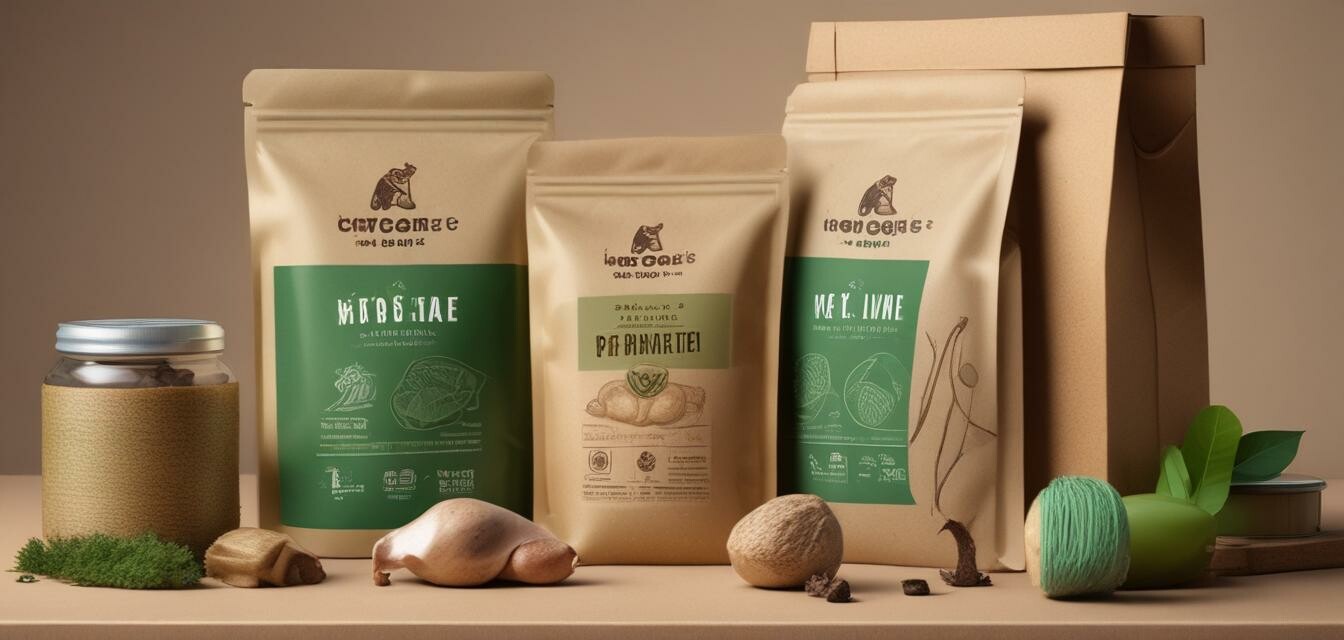
Eco-Friendly Packaging: A New Standard in Pet Products
- The pet industry is witnessing a significant shift towards sustainable packaging.
- Brands are adopting eco-friendly materials to minimize environmental impact.
- Consumers are becoming more eco-conscious, influencing purchasing decisions.
- Innovative packaging solutions are emerging, reducing plastic consumption.
- Regulations and certifications are driving the transition to sustainable packaging.
As the world becomes increasingly aware of environmental issues, the pet industry is no exception. Eco-friendly packaging is paving the way for a new standard in how pet products are presented to consumers. This article delves into the latest trends in sustainable packaging, showcasing brands leading the way and examining the impact on consumers and the planet.
The urgency of sustainable packaging
Packaging plays a critical role in the pet industry, as it protects products and communicates brand values to consumers. However, traditional packaging methods often rely heavily on non-recyclable plastics, contributing to significant waste and pollution.
Environmental implications
The environmental effects of plastic waste are profound, impacting our oceans, wildlife, and overall ecosystem. By transitioning to eco-friendly packaging, companies can help alleviate these issues. Let's look at some significant environmental implications of traditional packaging versus eco-friendly alternatives.
| Aspect | Traditional Packaging | Eco-Friendly Packaging |
|---|---|---|
| Material | Typically plastic and non-recyclable | Biodegradable, compostable, or recyclable materials |
| Environmental Impact | Contributes to ocean waste and landfill overflow | Reduces waste and lessens pollution |
| Consumer Perception | Seen as harmful to the environment | Aligned with eco-conscious values |
Innovative packaging solutions in pet products
As the shift towards sustainable packaging progresses, various innovative solutions are emerging:
- Biodegradable bags: Many brands are replacing plastic bags with biodegradable alternatives made from plant materials.
- Recycled cardboard: Products often come in packaging made from recycled cardboard, which also promotes better recycling practices.
- Minimalist designs: Brands are simplifying packaging to use fewer materials while maintaining product integrity.
- Reusable containers: Some companies are offering reusable containers that encourage customers to reduce single-use packaging.
Leading brands setting the standard
Several brands are at the forefront of this movement, making significant changes in their packaging practices. Here are a few notable examples:
| Brand | Eco-Friendly Initiative | Packaging Type |
|---|---|---|
| Brand A | 100% biodegradable packaging | Bags and boxes made from plant-based materials |
| Brand B | Utilizes recycled materials | Cardboard boxes for shipping |
| Brand C | Minimalist design with no plastic | Reusable containers |
Impact on consumer behavior
With the rising awareness of environmental issues, consumers are beginning to demand better packaging options from the brands they support. This shift in consumer preference is influencing companies to adopt more sustainable practices.
- Studies indicate that about 70% of consumers are willing to pay more for products with eco-friendly packaging.
- Brands that embrace sustainability often see a boost in customer loyalty and satisfaction.
- Social media plays a crucial role in promoting eco-friendly products, encouraging brands to share their sustainability stories.
Regulatory influences
Governments and organizations around the globe are implementing regulations aimed at reducing plastic waste. This mandates greater transparency and encourages companies to adopt sustainable practices.
Certifications and initiatives
Brands that wish to gain credibility in their environmentally friendly claims often seek certifications from recognized organizations. This includes labeling environments that indicate the packaging meets specific waste reduction standards.
Conclusion
The transition to eco-friendly packaging in the pet industry signifies a crucial step towards protecting our environment while providing consumers with the products they love. As more brands adopt sustainable practices, consumers can feel good about their purchases, knowing they are making a positive impact on the planet.
Tips for eco-conscious pet owners
- Choose products with minimal or recyclable packaging.
- Support brands that prioritize sustainability in their packaging and manufacturing processes.
- Engage in recycling programs or initiatives offered by manufacturers.
- Share your eco-friendly choices on social media to inspire others.
Pros
- Reduced environmental impact
- Alignment with eco-conscious consumer values
- Potential cost savings in material sourcing
- Enhanced brand reputation
Cons
- Initial investment in sustainable materials can be higher
- Consumer education needed on new packaging
- Durability concerns with certain biodegradable materials